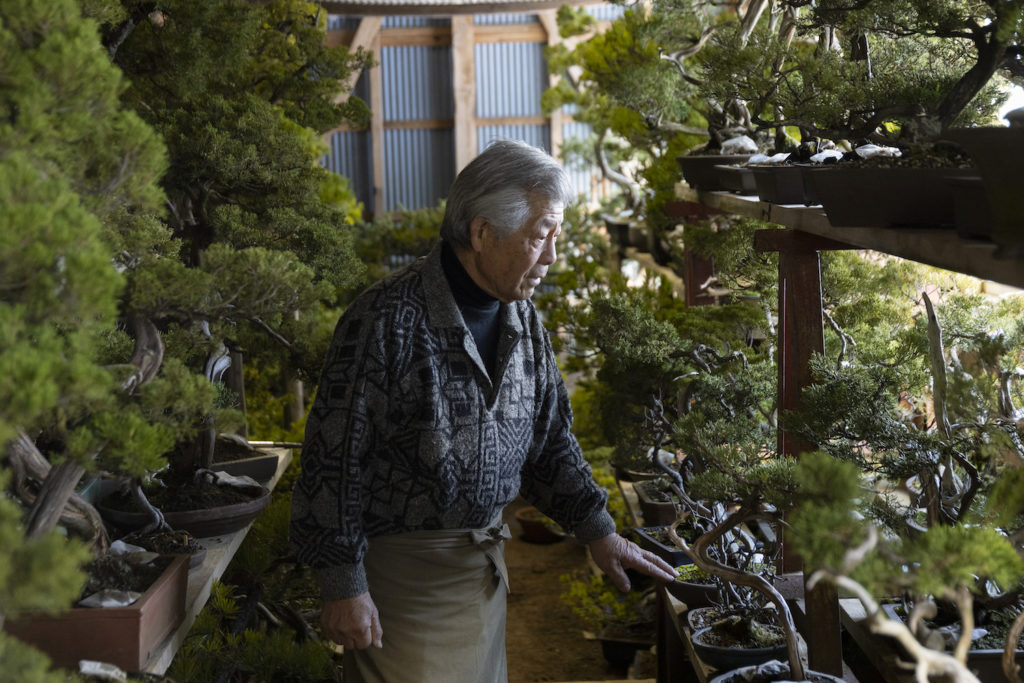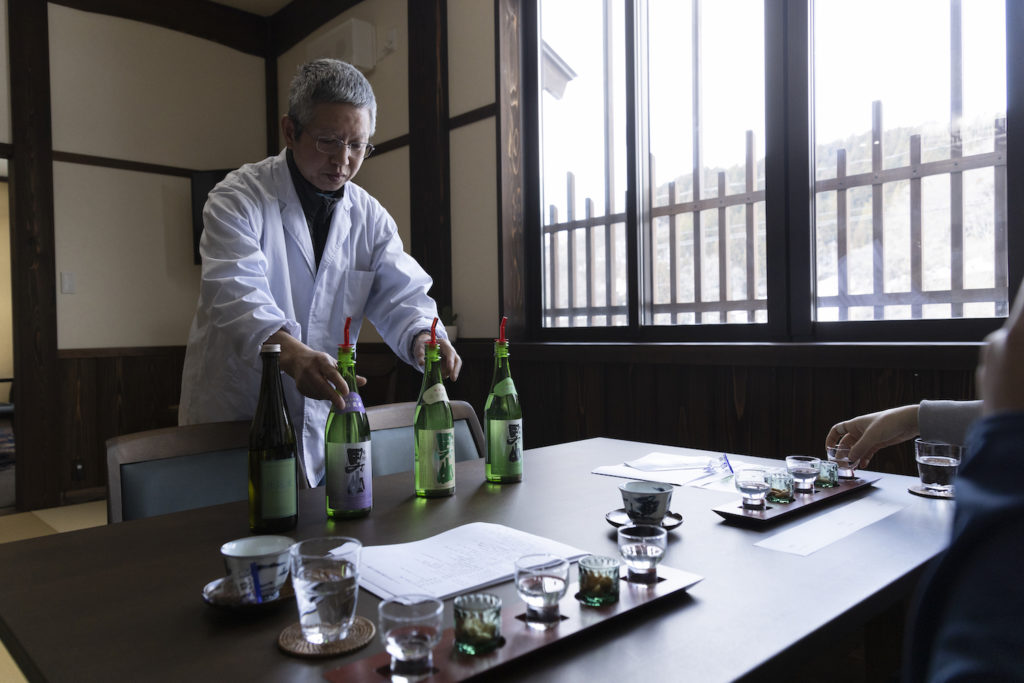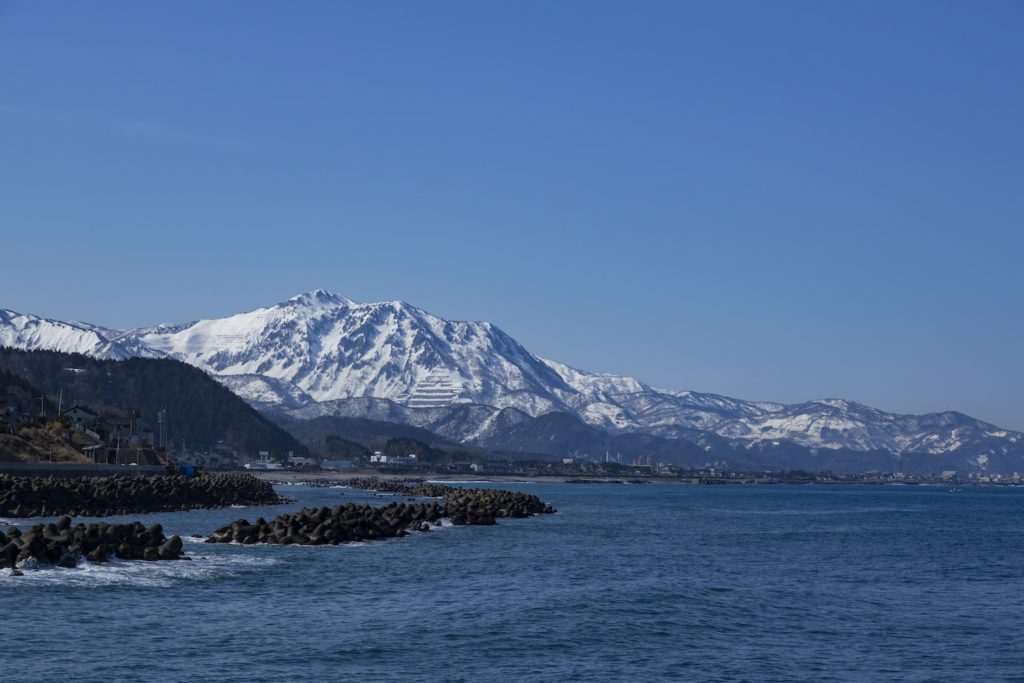Severity and plentifulness balanced in nature.
At the foot of Mt.Myojo is the Kotakigawa Jade Gorge, a designated national monument. The exposed rocky stretch made of caustic lime is the natural habitat of the Itoigawa Chinese Jupiter, beloved in the bonsai world. Laying a multitude of fine roots into the scanty soil on the vertiginous cliffs, these hardy trees stretch upwards toward the sunlight yet are weighed down by the weight of the snow and buffeted about by strong winds. It is rare to find them in the mountains these days, and most people grow from cuttings. Shigeki Ota, the 3rd generation since his grandfather to work with these trees, puts it like this: “The Chinese Juniper is a hardy tree that can withstand the elements. It is quite simply a work of art hewn at by the hands of mother nature.” The bone-white trunk, stripped of evergreen leaves and bark, is a reminder of this vitality and agility. Itoigawa is full of such gems.

Flowing through the craggy peaks into the Japan Sea, the rivers moisten the 7 valleys of Itoigawa, where rice is grown. Among these, the Nechi valley sprawls from east to west, with sunlight and prevailing wind providing the ideal Terroir for making rice and sake. While Terroir usually refers to the characteristics of wine caused by the soil and conditions, it can be equally applied here for Japanese sake. Yoshiki Watanabe of Watanabe Brewing where the famous Japanese sake “Nechi Otokoyama” is brewed, proudly explains: “We make Japanese sake in Domaine style, from cultivating the rice to bottling the finished product”. Aside from brewing and sake, he enlightens us on how rice is cultivated to preserve the bountiful land that produces sake, and how he nurtures the next generation of brewers. Both rice cultivation and sake brewing are handled by a total of 7 men ranging in age from 20s to 60s, including his eldest son. For the in-house cultivation that he launched in 2003, he introduced machinery so as to keep the youngsters on board, and is now 95% mechanized. “People who live in the valley here have a duty to be thankful for the incredible environment with sea, peaks and rivers all around, and to carry it forward with an eye the next decade.” His daughter and her husband, both in their 20s, joined in from spring, marking her 19th year working in the paddies.














